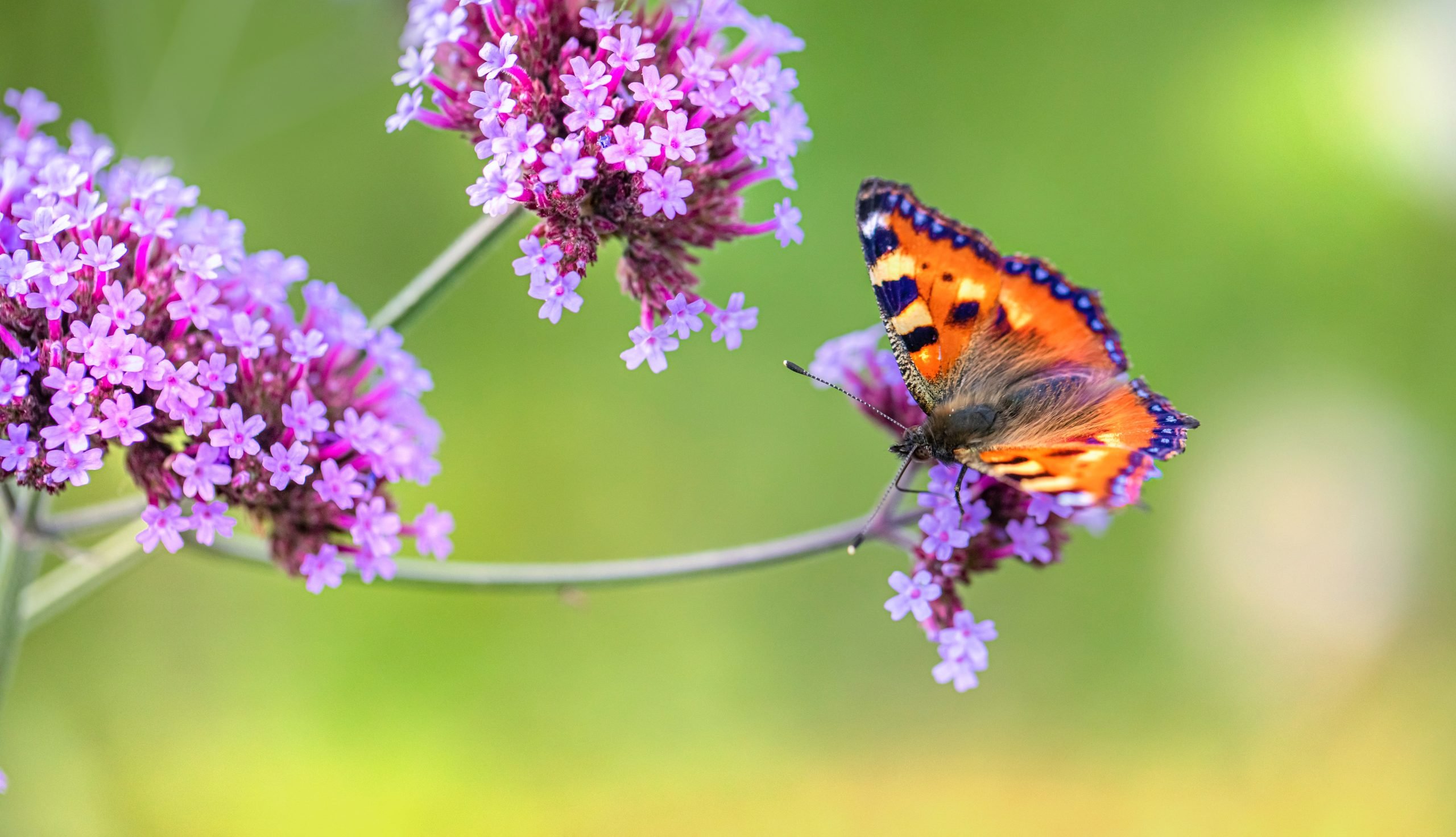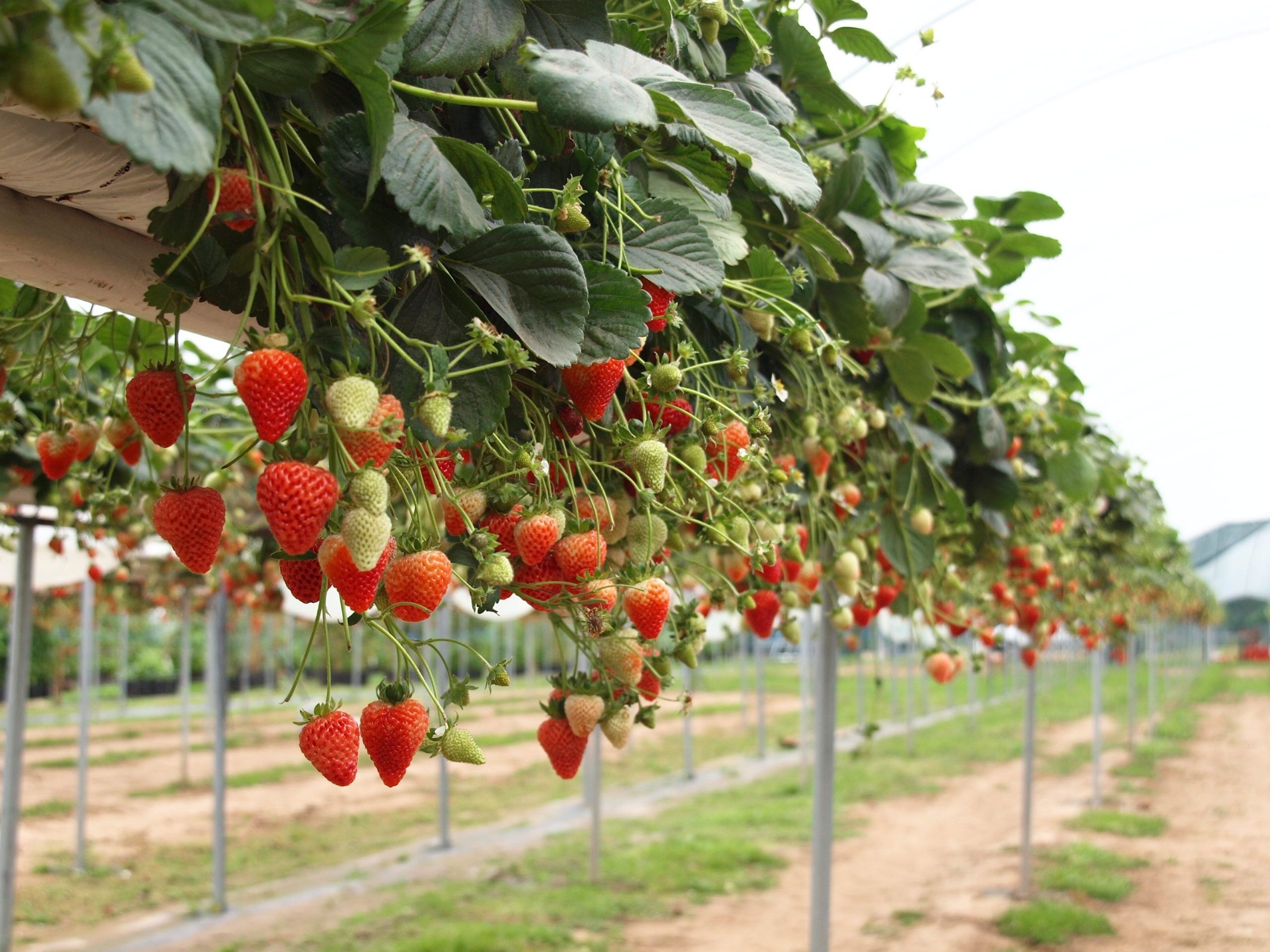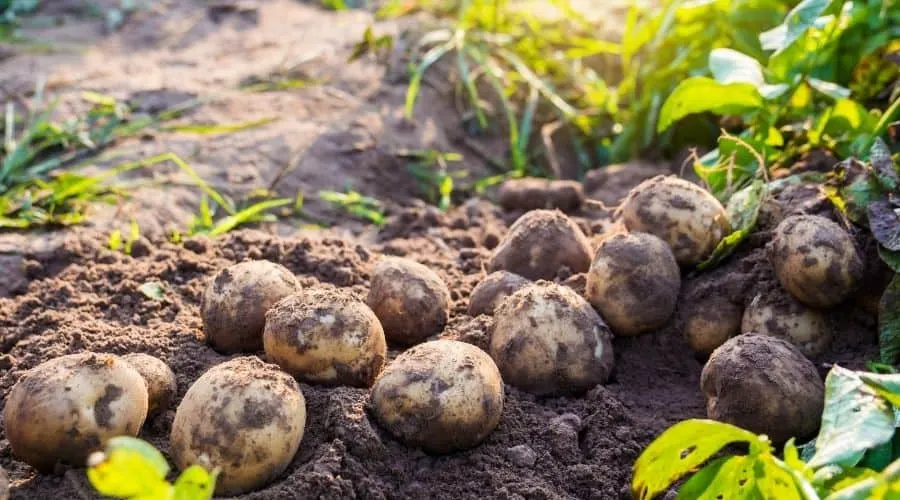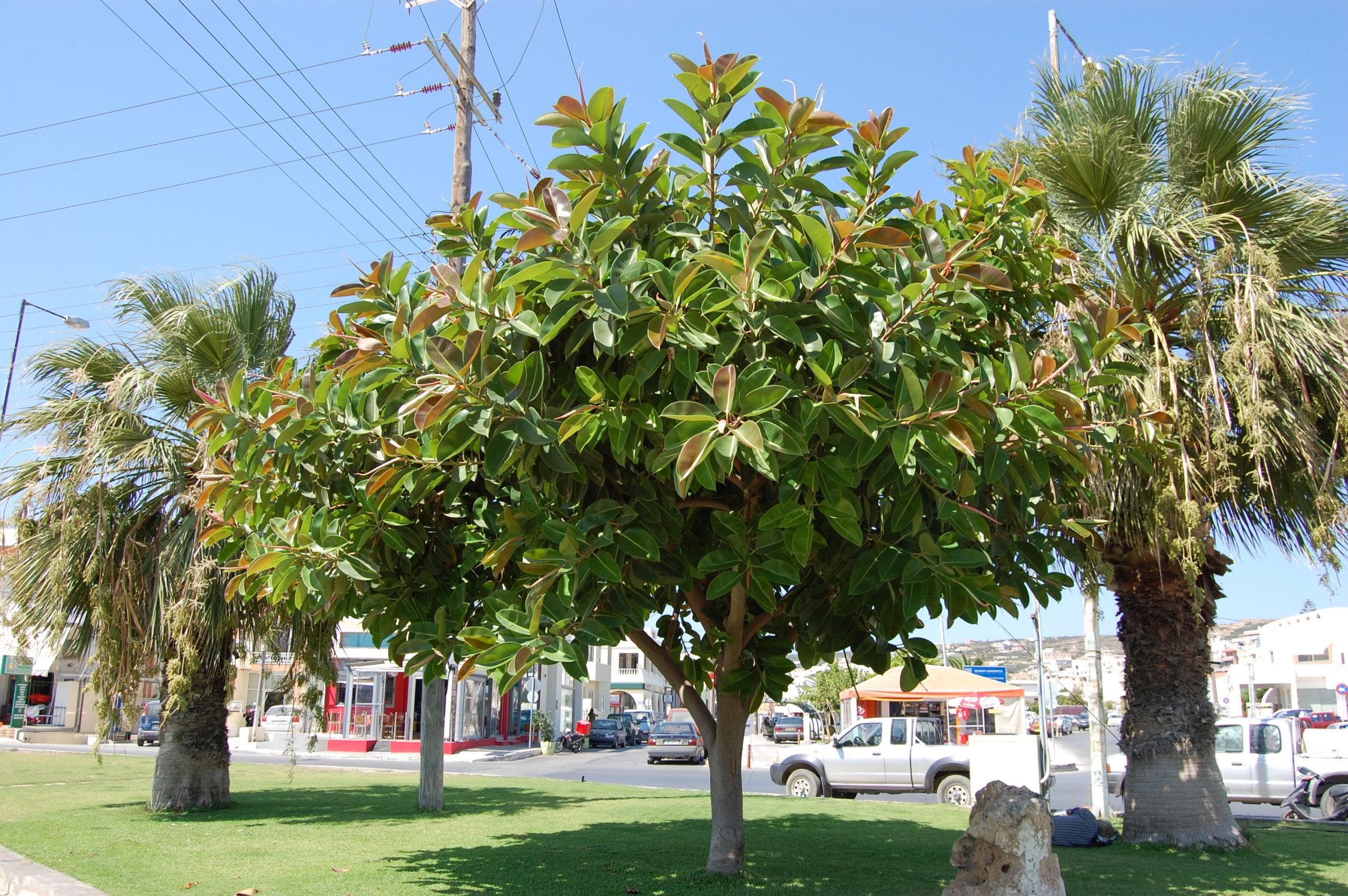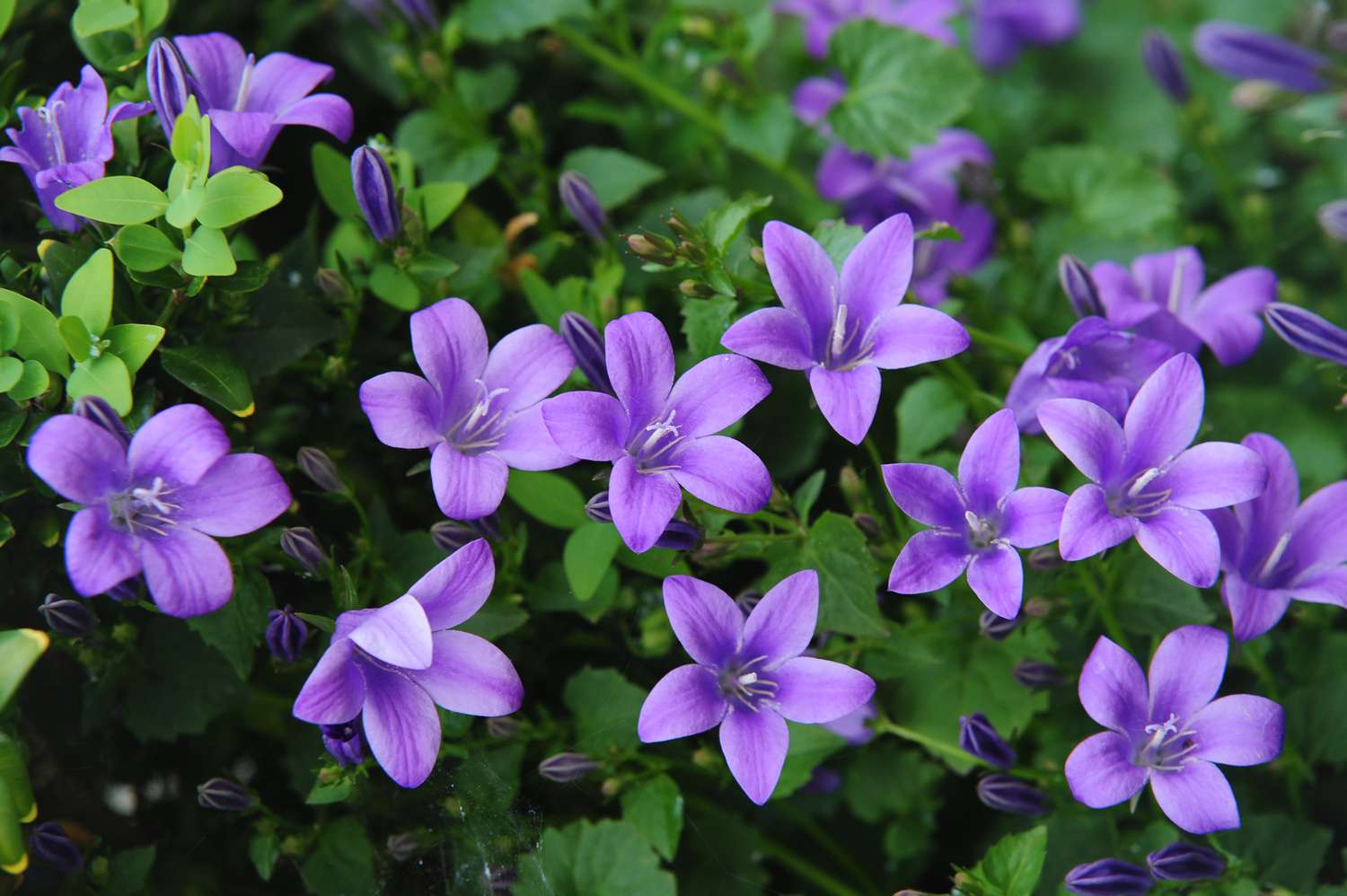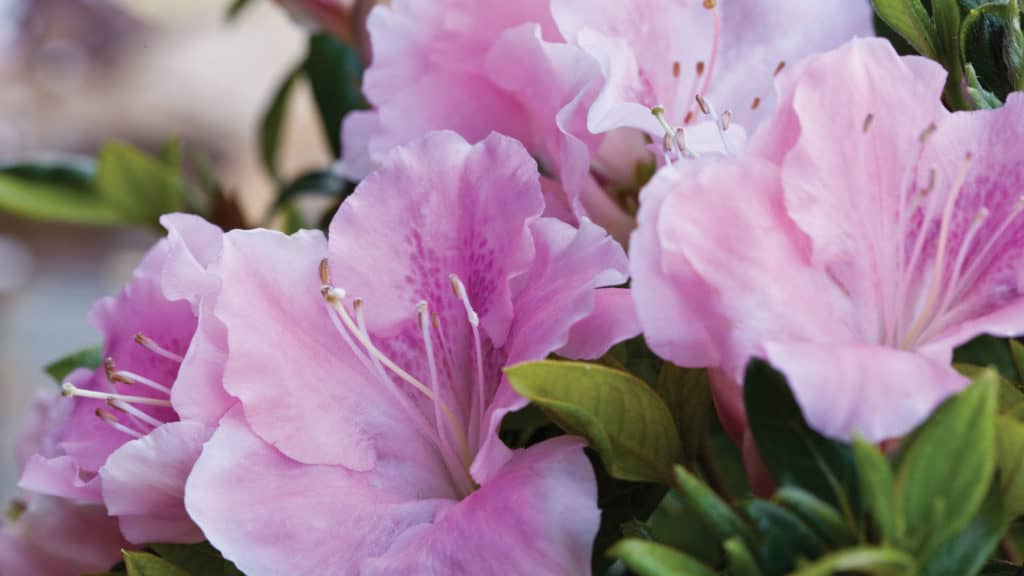How to Prune Your Hebe Plant for Optimal Growth and Maintenance
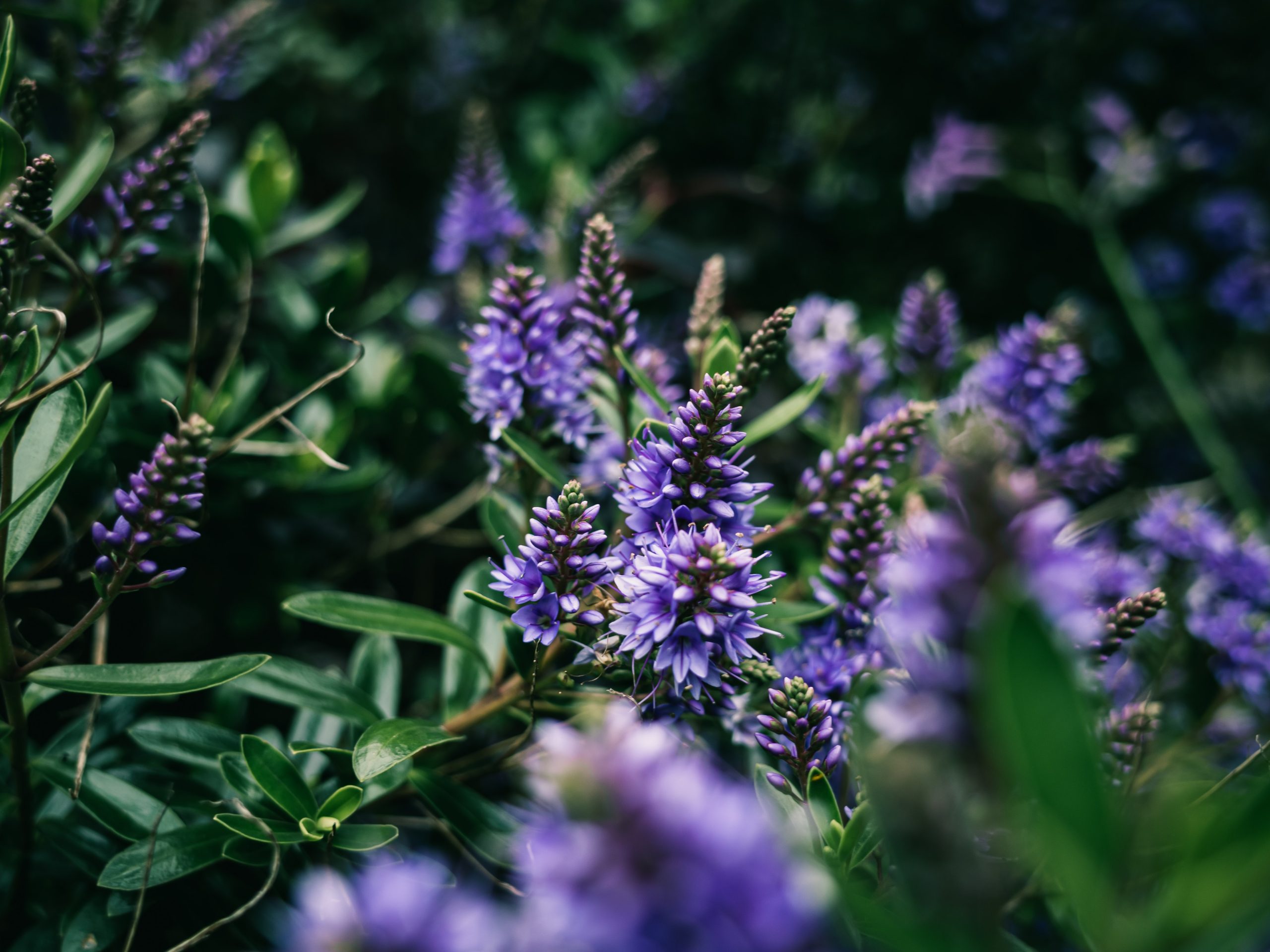
Table of Contents
Hebes are excellent plants majorly used as plant borders that cover the ground and act as a hedge in your garden. These shrubs are available in a wide variety of sizes and shapes, and we are sure you must have chosen the variety that is most suited for you. They are low-maintenance plants that require you to make a minimal effort in their growing stage and aftercare.
Hebes are an important source of nectar and pollen for bumblebees as they flower over a long period. In some regions, you can see hebes flowers blooming all year round. The flowers come in different colours, like white, blue, and pink. The colours of the leaves, too, go from dark green to pink at different times of the year.
In this article, you will learn about taking care of your hebe by occasional pruning and shaping.
How to Prune Hebe
If you have grown a hebe by yourself in your backyard, you might notice the shrub growing awkwardly in your garden and wandering places. They are likely to disturb the other plants with their growth by being all over the place. Further, they might reach places like your neighbour’s backyard or even the road with their wild branches and beautiful flowers, making it difficult for you to maintain them. Hence, hebe pruning is important as you see them being overgrown.
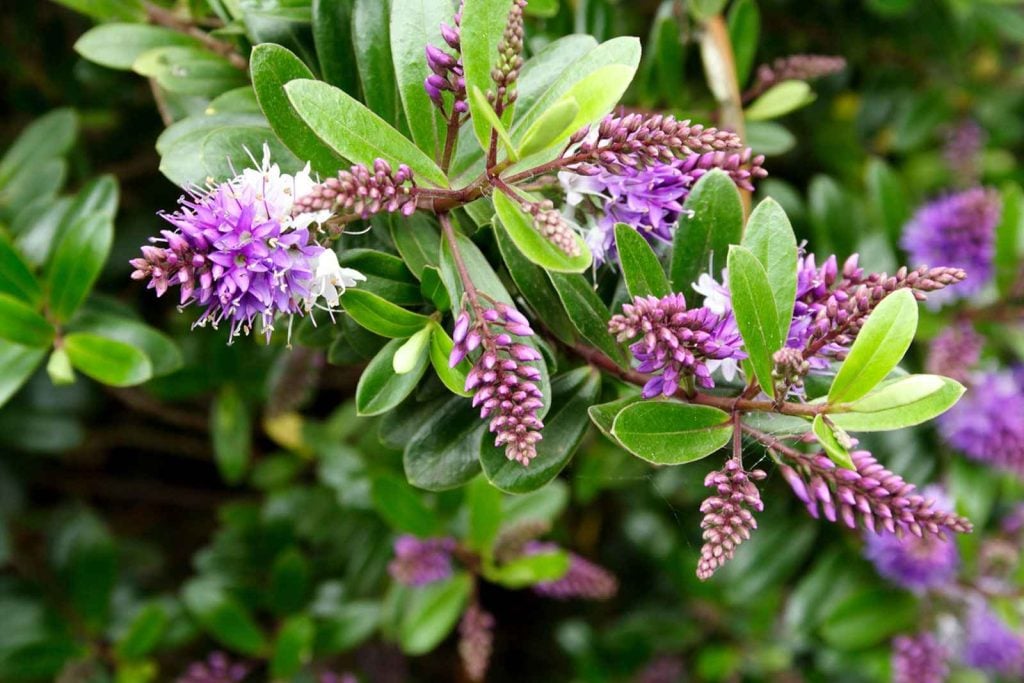
There are multiple benefits to pruning hebe, such as keeping the shrubs in place and shaping them such that they look tidy and beautiful in your garden. Further, it helps eliminate any untidy and spent flowers that will damage the look of your plant. It makes your garden look well-curated and beautifully maintained to whoever comes in. Also, it improves the reach of sunlight to the plant.
Best Time for Pruning Hebe
The growth of hebe is not very fast. So you can prune the hebe plant once every year, and it will do the work for you. It will keep the plant neat and ensure that they flower efficiently. As soon as flowering is finished on a hebe plant, just cut out the dead flowers from it. Some stems must have faced burns after a harsh winter frost. Pruning hebe will get rid of them too.
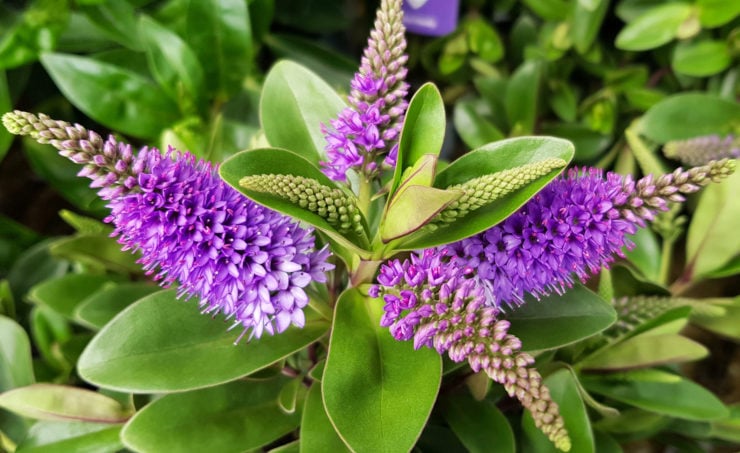
Trim the plant such that it is brought down to being a live bud free to grow again the way it wants. Check out your plant after March and prune the damaged stems and flowers off it. Further, prune it in the late summers for a good growth and tidy look.
How to Prune Hebe?
1. Eliminate Deadheads
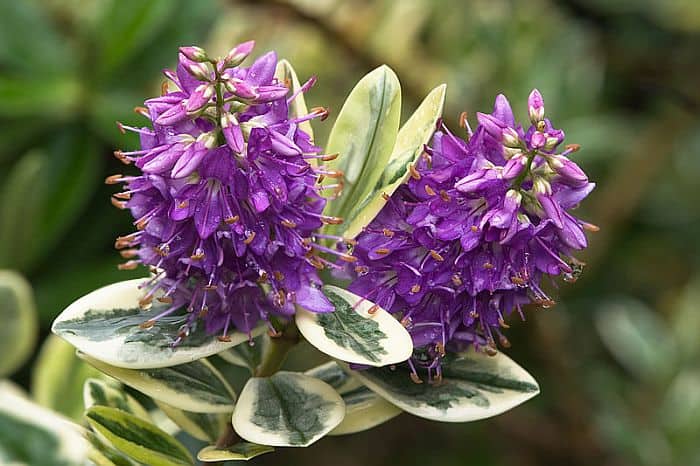
Hebes flower takes a long time to grow if the weather is mild for it. They blossom for a few months and once they are faded, they look untidy. After the flowering season is over for hebe, you will notice some dead flowers on the plant that have become darker in colour as compared to other flowers. Eliminate all these flowers from the plant as deadheads using a pair of secateurs that will help in further blooms and increase its flowering period.
2. Eliminate Wood
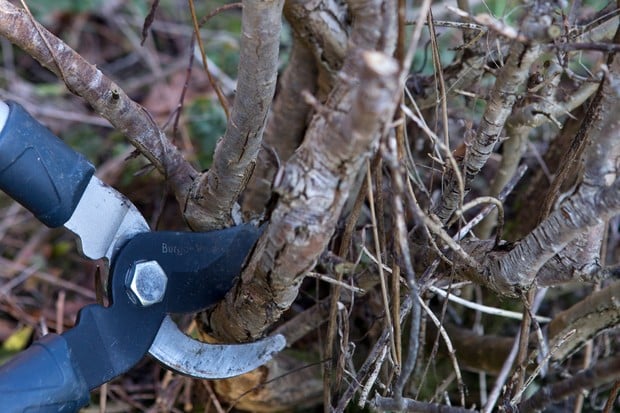
After the winter season, you will notice that some of the stems and wood have left life and are damaged or even died. You can remove them in the later summers, when the flowering period is over, to keep your plant healthy and in shape. You can use a sharp pair of shears or secateurs to cut it. They are slow-growing shrubs and require very less pruning for the removal of dead and unhealthy parts to promote better growth.
Experts suggest that you must prune the plant a little regularly instead of pruning them all at once. Hard pruning is not easy for the plant to handle and then regrow if it is cut back too much in a piece of wood. Hence, light prune is another way to go for a healthy plant.
In the last days of summer, you can prune up to one-third of the grown plant so that it stays in a compact shape and looks good.
3. Prune Again
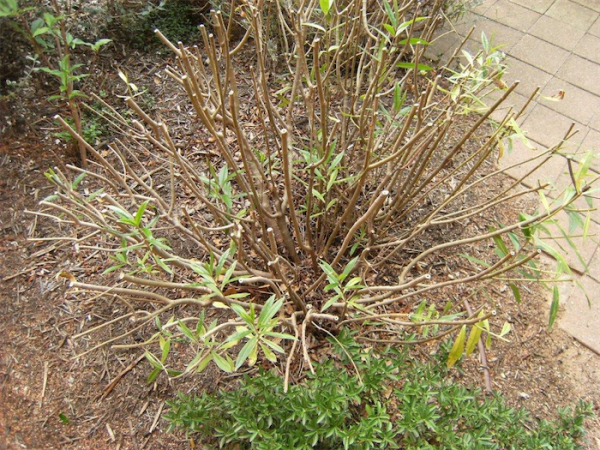
You can prune the plant again in the spring to shape its new stems and leaves and give them the way to grow in your desired shape and size. You will have a newly planted-like shrub ready to blossom in your backyard. The hebes can stay in low temperatures for a while as they are generally hard, but they struggle to survive in low temperatures for an extended time in a cold and wet winter.
There are a lot of dead branches at the end of the winter season if the soil becomes saturated. Hence you must check them again as the temperature rises.
They prefer well-drained soil because if they are grown on compact soil, they become waterlogged. In such cases, you can use some organic matter in the soil for better drainage.
4. Hard Prune
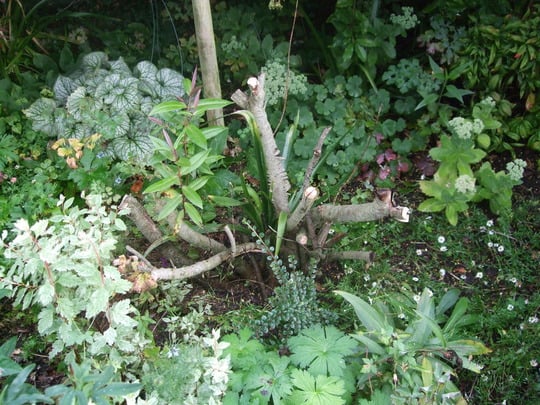
For the parts of the plant that look leggy or worm, prune hard to give rejuvenation to their leaves and stems for strong growth in the coming months of sunlight and good weather conditions.
Even though it is not advised to hard prune the hebes, you can try this step as an experiment before completely replacing the plant. In certain conditions, it can regrow. You can rejuvenate the hebe in March before new buds begin to form.
How to Take Hebe Cuttings?
Some varieties of hebe live well for a long time, even after completing a decade. But some species stay at their best for a shorter time. After their death, you need to replace the hebe with another plant either of the same species or another.
If you are planning to grow another hebe plant in its place, the easiest way to do it is by taking cuttings from the old shrub. You can also buy a hebe sapling and plant it. But this is the best method of replacing a hebe as you do not have to spend anything on it.
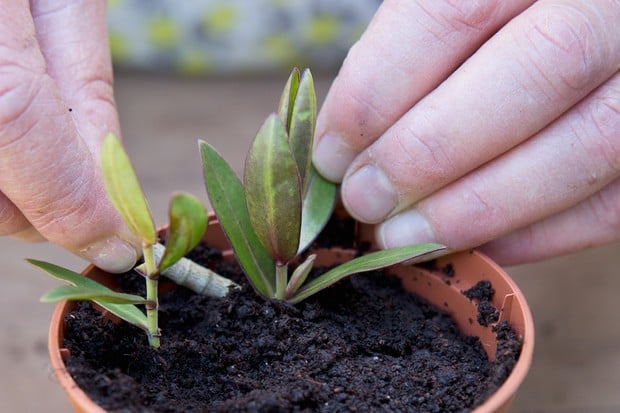
If you want the latter part, you must begin the process as soon as you feel that the plant is not in good condition and is likely to die soon. But before you take the plant out from its roots, you must ensure that the new one is ready to be planted.
You can take cuttings from an old hebe plant from July to September. You can use sharp secateurs to cut the stems of the current living plant that is around 15-20 cm long. As you cut it, put it in a plastic bag and keep it in a shady area till the time you are ready to plant it. You can either plant it on the ground or even in containers and pots.
Now you must fill the container with half of the horticultural grit and the other half with compost, or you can use proprietary cutting compost for it. Water the pot for some time and then allow it to drain. If you have a pot of about 9 cm to 10 cm, it will require at least three to four hebe cuttings. Make every cutting about 10-15 cm long.
Cut them just below the part where a set of leaves is in the way of blooming.
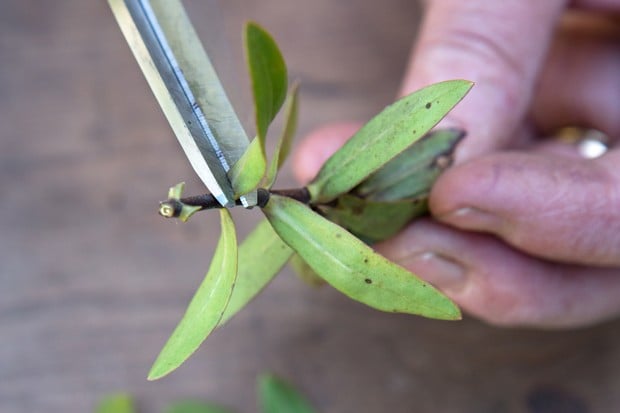
Now you can remove all the lower leaves and cut off the tip of the hebe cutting. Then you must put cutting in the compost in such a way that it is close to the edge of your container.
Securing the Cuttings
If you want good security for your cuttings, you can dip their ends in a hormone-rooting mix or gel. Also, you can store the cuttings in a greenhouse if you have access to it. Apart from that, if you are doing this at your home by yourself, you can place them in a plastic bag in a warm and shady place, not exposed to direct sunlight in any way.
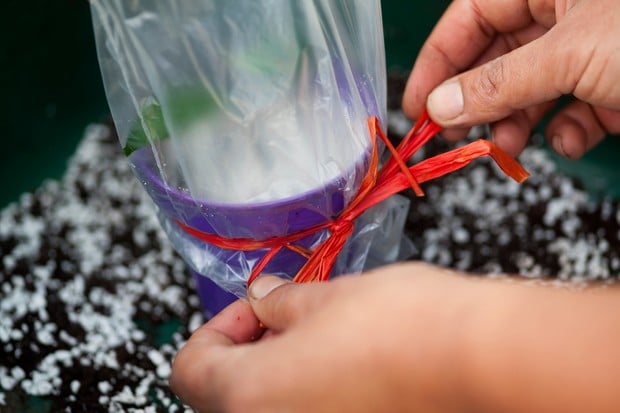
You must regularly remove the bag to decrease humidity around the hebe plant cuttings. The cuttings will grow a root by the end of the spring. Then you can transfer them to individual posts that are filled with poor-quality soil and loam-based potting compost.
Best Soil to Grow Hebe
Hebe plants can grow in any type of soil as long as it is well-drained. The plants need open space to spread out and absorb sunlight. In fact, in some varieties, too rich soil is likely to give lax and weak growth of the plant that may damage in the winter season due to wind and frosts.
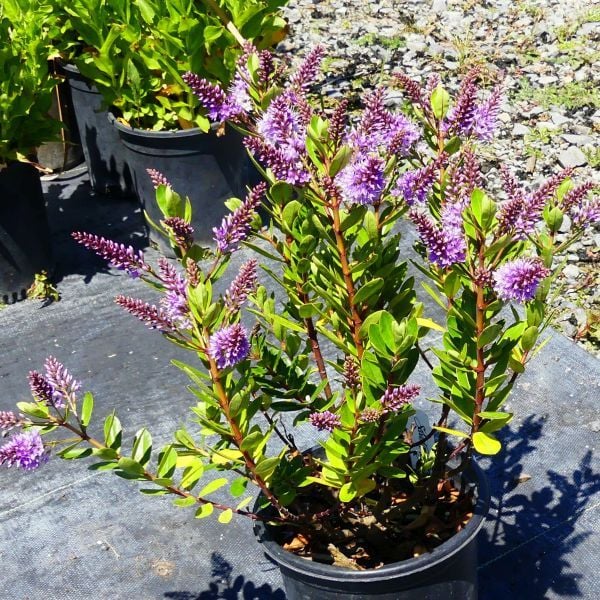
Usually, you may see other plants require compost and annual feed for their growth. This is not the case with hebes. They can grow well without them. If you think your soil is heavy for hebes, dig a lot of horticulture grit in the area before you plant the hebe to increase its thriving in that area. Ensure that you plant the shrub in a sheltered area that receives frequent sunlight, as the plant cannot handle cold weather conditions.
Best Hebe Plants for Your Garden
1. Hebe ‘Pascal’
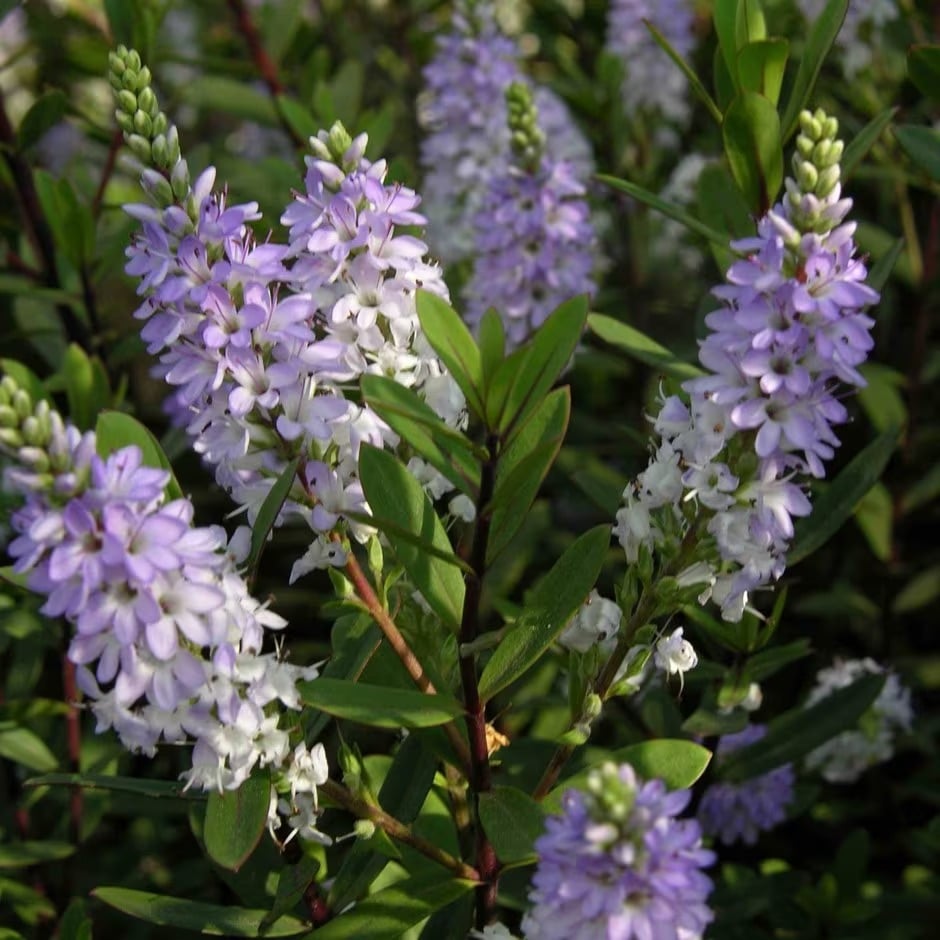
A hebe plant is an amazing addition to your garden, especially during the winter season when they look spectacular with leaves that are narrow and lace shaped and turn into burgundy over a period. In the summer season, apple green leaves and beautiful pale blue flowers add elegance to your garden.
2. Hebe ‘Northern Lights’
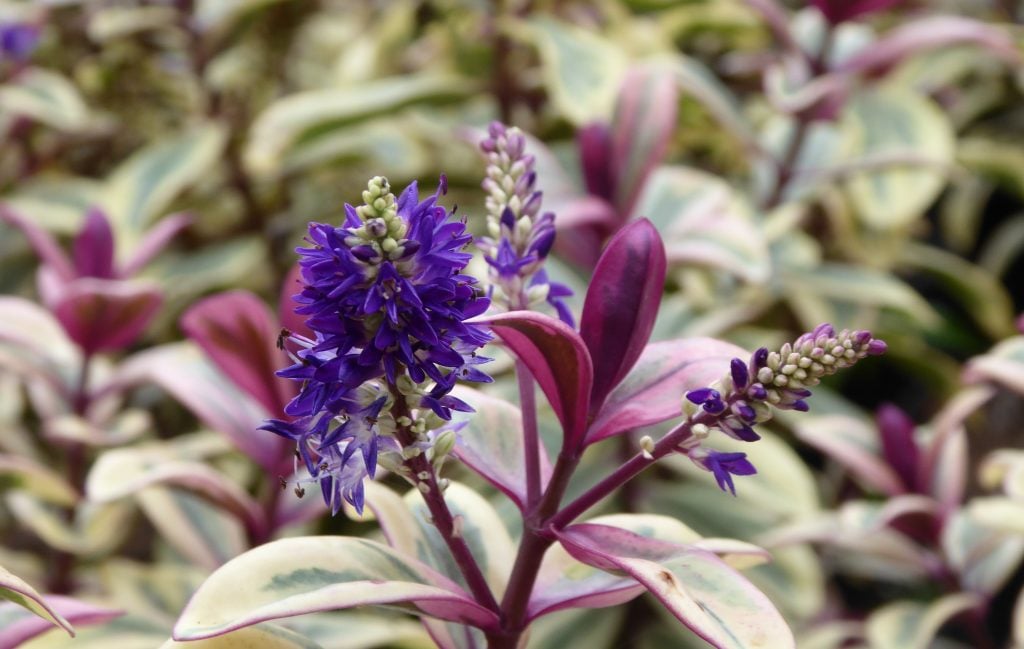
This is the striking Hebe plant that was launched a few years ago. It comes in grey-green and oval-shaped leaves, and margins are found in cream colour. After the new growth, the plants are of dark green stems with pink edges on the leaves. The flowers are in beautiful purple, radiating vibrancy into your garden.
3. Hebe ‘Sparkling Sapphires’
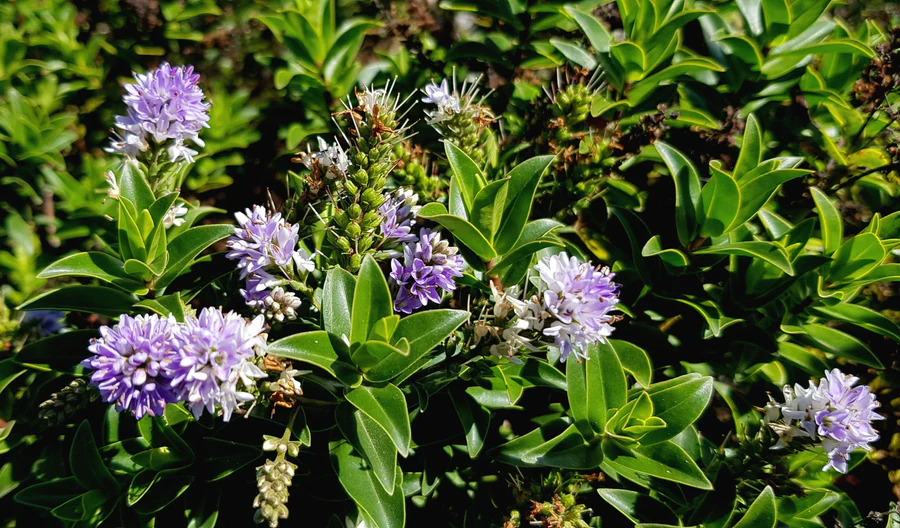
This variety of the hebe is recent progress in the species. The leaves are in a pale margin that turns into a creamy yellow shade in June. This gives pale-blue blossoms in the season.
4. Hebe Buxifolia ‘Nana’
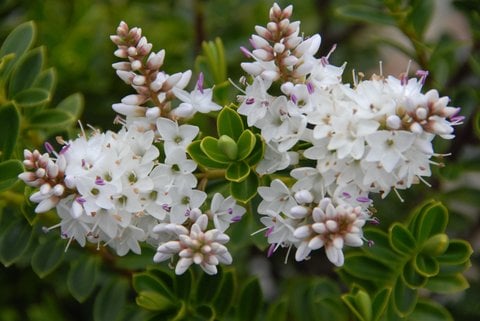
Nana is a dense shrub, round in shape with glossy leaves that are about 1 cm long that look just like boxwood. The plant flowers in July are in pale-lavender. It is a plant that requires some maintenance to grow well.
5. Hebe ‘Heartbreaker’
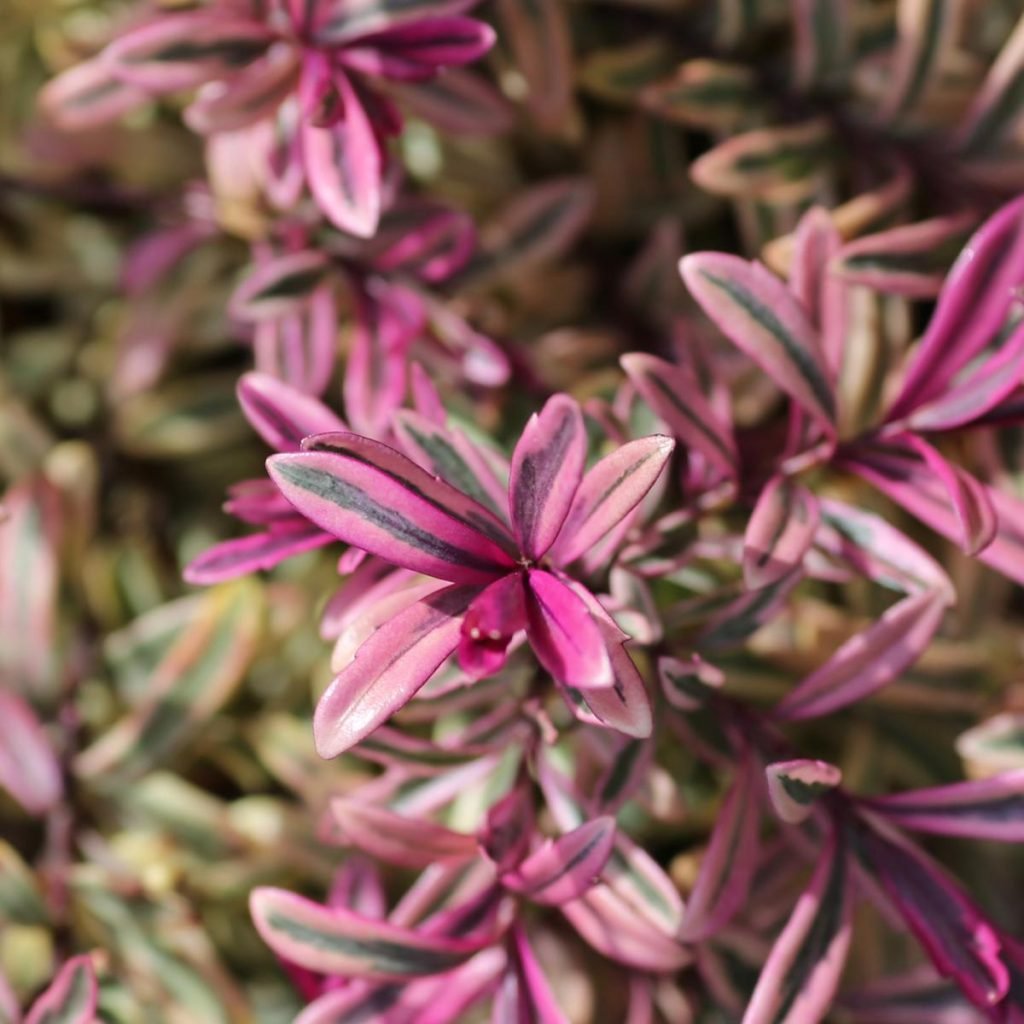
The main reason why hebe is grown in gardens in households is that it has colourful foliage that is beautiful to look at. During the summer season, the leaves take green colour with a white border. In the autumn season, they turn pink and purple. The flowers and foliage together add beauty to your house.
6. Hebe Garden Beauty Blue
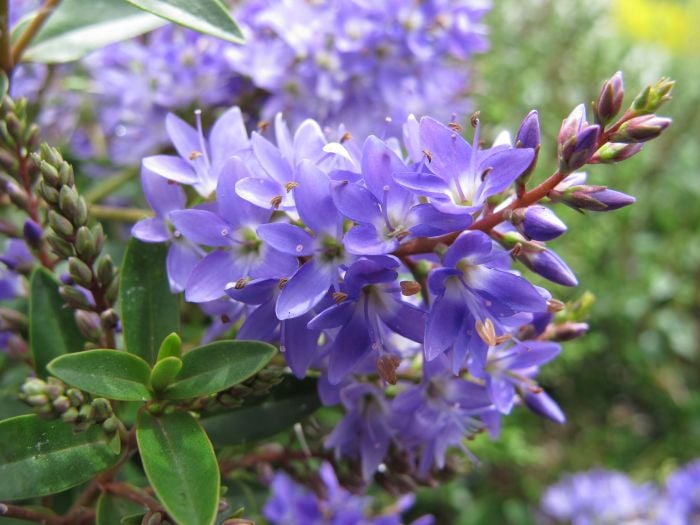
The garden beauty variety of hebe gives vibrant and prolific flowers that are enough to make your day just by looking at them. The plant is covered in an abundance of flowers shining on in bright-blue colour.
7. Hebe Starlight
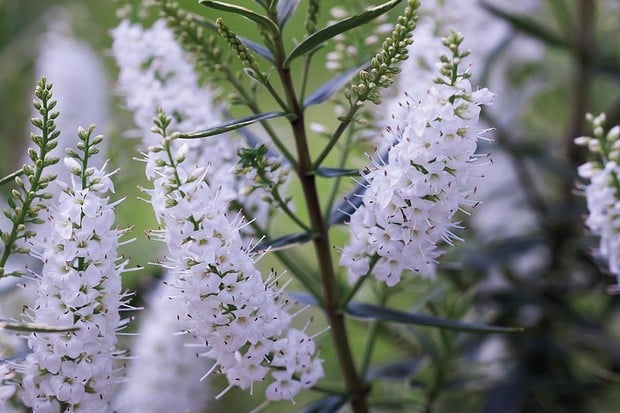
This variety of hebe comes with green and cream leaves. They give an elegant bright white coloured flower that attracts a lot of attention from visitors.
8. Hebe Blue Ice
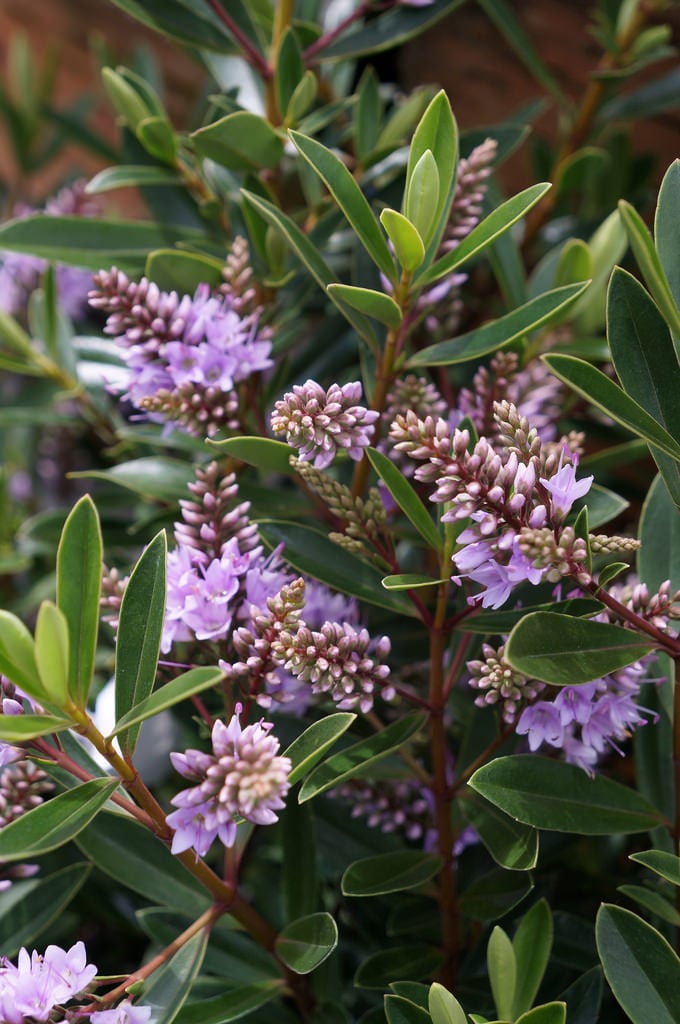
This hebe type is gaining a lot of popularity because of its compact shape and the bright green leaves. The plants are filled in abundance with pale-blue flowers on the top. They can be seen in the middle of summer for about six weeks.
Conclusion
Pruning Hebe plants is an important task due to its ability to outgrow your garden and spread awkwardly. Further, after the flower season, the plants have dead heads that need to be eliminated. It is usually grown on the hedges, which makes it important for the plant to be well placed in shape to give a tidy look to your garden. There are various types of hebes found in nature, and they are different based on their growth, colours, height, and other requirements.
You must choose the one that goes with the climatic conditions in your area. Tell us about your pruning hebe experience in the comments.

